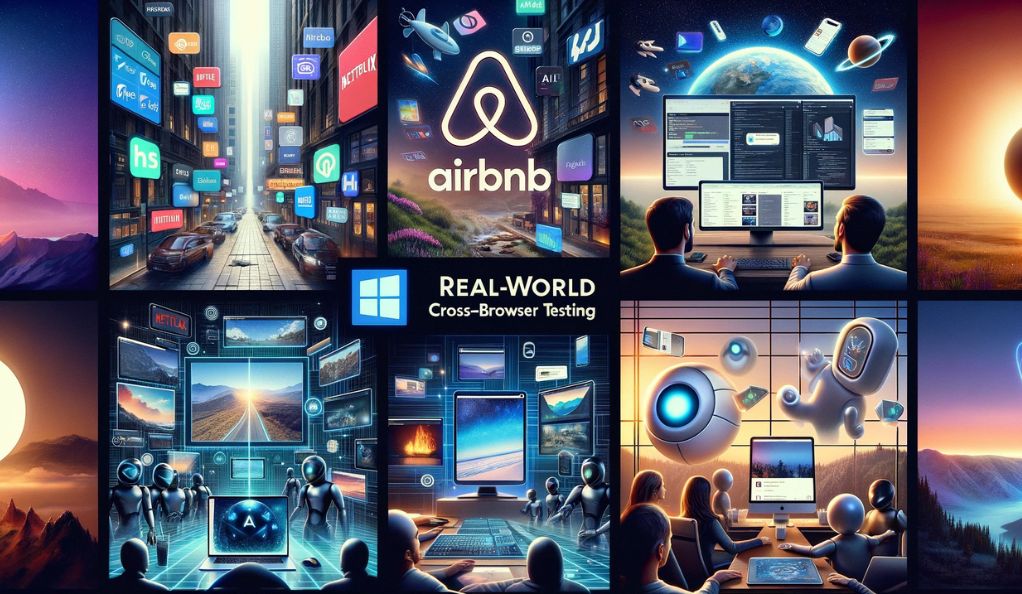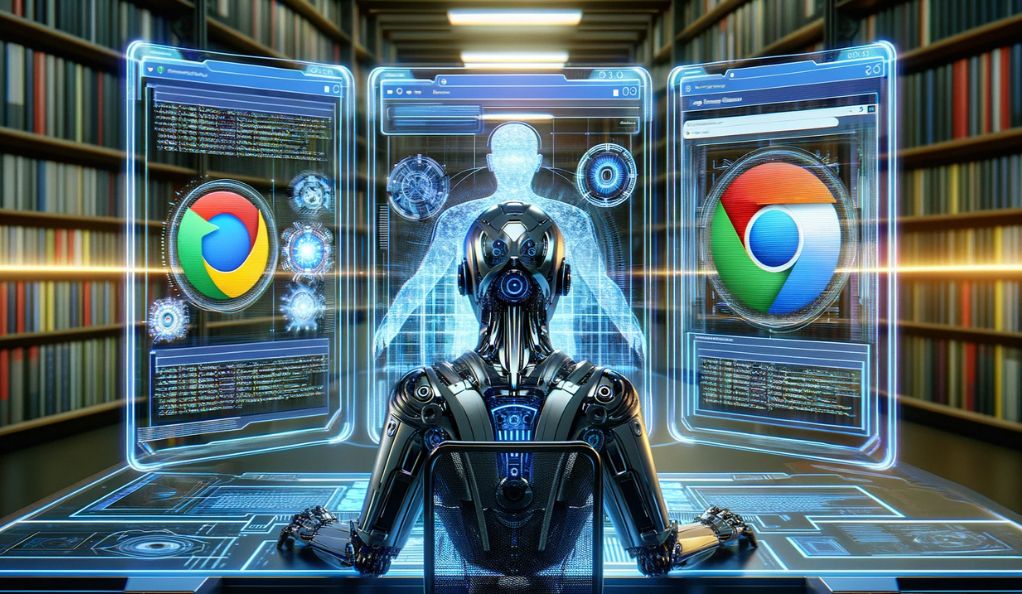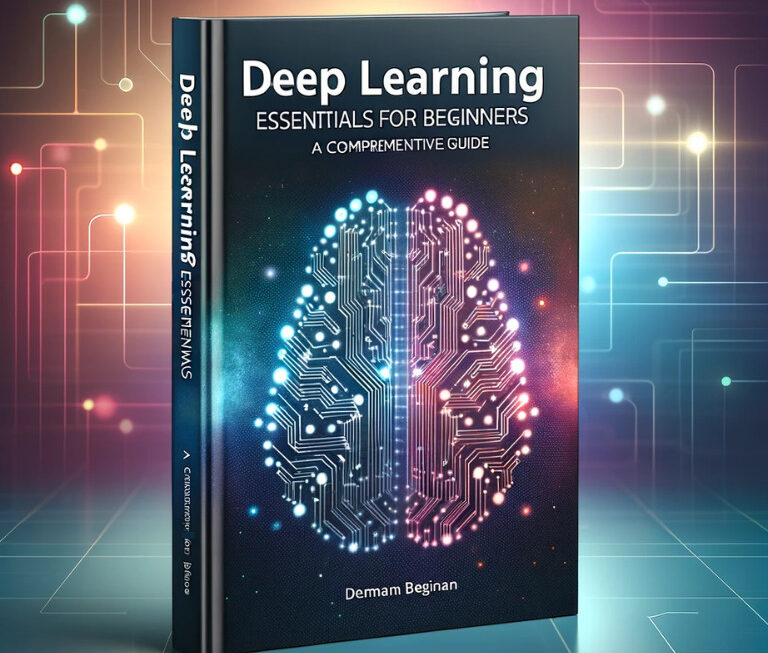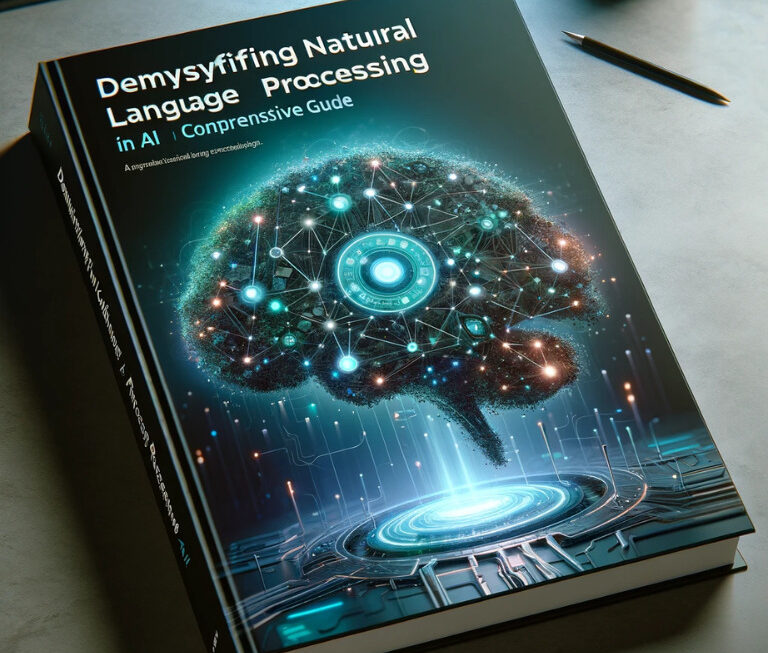In the ever-evolving landscape of web development, ensuring that your website or web application functions seamlessly across different browsers and devices is paramount. Users today access websites through a multitude of platforms, such as Chrome, Firefox, Safari, Edge, and various mobile devices. Each of these platforms has its quirks, rendering engines, and standards compliance, which can lead to inconsistent user experiences if not addressed diligently. This is where cross-browser testing comes into play.
The Need for Cross-Browser Testing
The term “cross-browser testing” refers to the process of assessing and validating how a website performs and looks across various web browsers and devices. Its significance cannot be overstated, as inconsistent rendering can result in usability issues, broken functionalities, and, ultimately, a loss of users and revenue.
Consider the following scenarios:
| Issue | Description |
|---|---|
| Layout Discrepancies | A webpage that appears perfectly aligned in Google Chrome might display distorted elements when viewed in Mozilla Firefox or Microsoft Edge. These disparities can severely affect the user experience and deter potential customers. |
| Functionality Breakdowns | A feature that functions smoothly in one browser may malfunction in another. For instance, a JavaScript-based interactive component may work flawlessly in Chrome but fail to load in Safari. |
| Performance Variations | Load times and resource utilization can vary significantly from one browser to another. A sluggish website in one browser could lead to high bounce rates and negative user reviews. |
| Security Concerns | Certain security vulnerabilities may be browser-specific. Identifying and addressing these vulnerabilities promptly is crucial to maintaining the trust of your users. |
To mitigate these challenges, web developers have traditionally performed manual cross-browser testing, where testers manually open websites in different browsers and verify their behavior. While effective to some extent, manual testing is time-consuming, error-prone, and not scalable.
This is where AI-powered solutions come to the rescue. AI-driven cross-browser testing offers a revolutionary way to ensure consistency and functionality across various platforms. It leverages the capabilities of artificial intelligence to automate testing processes, identify issues, and streamline the development workflow.
Benefits of AI in Cross-Browser Testing

As we’ve established, cross-browser testing is an essential part of web development, but the conventional manual approach has limitations in terms of efficiency and accuracy. This is where artificial intelligence (AI) steps in, revolutionizing the way we approach cross-browser testing. In this section, we will explore the numerous benefits that AI brings to the table.
- Improved Test Coverage:
- AI-powered cross-browser testing allows for significantly broader test coverage. Traditional manual testing can be time-consuming and may not cover all possible combinations of browsers, devices, and operating systems. AI, on the other hand, can execute a multitude of tests simultaneously, ensuring that your web application is thoroughly checked against various configurations. This extensive test coverage helps catch issues that might otherwise go unnoticed.
- Speed and Efficiency:
- Time is of the essence in the world of web development. AI-driven testing can execute tests at lightning speed, reducing the time required for regression testing and ensuring quick feedback to developers. With the ability to run tests 24/7, AI eliminates bottlenecks and accelerates the development cycle, ultimately leading to faster time-to-market.
- Increased Accuracy:
- Manual testing is prone to human error. Testers may overlook issues, execute tests inconsistently, or make mistakes in documenting and reporting defects. AI, on the other hand, performs tests with unwavering precision and consistency. It records detailed results, making it easier to pinpoint and resolve issues promptly.
- Scalability:
- As your web application grows and evolves, so does the complexity of cross-browser testing. Expanding your test suite to cover new browsers, devices, or features can be daunting with manual testing. AI-driven solutions can effortlessly scale to accommodate changing testing requirements. Whether you need to test on the latest browser versions or ensure compatibility with emerging devices, AI can adapt and extend its capabilities accordingly.
- Cost Savings:
- While adopting AI for cross-browser testing may require an initial investment, it ultimately leads to significant cost savings. The reduction in manual testing efforts, faster bug identification, and decreased risk of post-release issues all contribute to a more cost-effective development process. Additionally, AI enables better resource allocation, allowing testers to focus on more creative and strategic aspects of testing.
- Comprehensive Reporting:
- AI-powered testing tools generate detailed reports that provide valuable insights into the quality of your web application. These reports not only highlight issues but also offer analytics and trends that can inform decision-making. This data-driven approach empowers teams to prioritize and address critical issues efficiently.
AI-Powered Cross-Browser Testing Tools
In this section, we will explore the array of AI-powered tools and frameworks that have emerged to facilitate cross-browser testing. These tools leverage machine learning, automation, and advanced algorithms to streamline the testing process and ensure the highest level of compatibility and functionality across different platforms.
Selenium with AI Integrations:
Selenium, a popular open-source automation testing framework, has witnessed significant enhancements through AI integrations. AI-powered Selenium extensions can automatically identify and adapt to changes in the DOM (Document Object Model), making test scripts more robust and resilient. They also provide intelligent element locators that reduce the risk of script failures due to UI changes.
Cross-Browser Testing Platforms:
Several dedicated cross-browser testing platforms employ AI to simplify the testing process. These platforms offer a vast array of browser and device combinations for testing. AI algorithms help identify compatibility issues, and some platforms even provide visual testing capabilities to detect layout and rendering discrepancies. Examples of such platforms include BrowserStack and Sauce Labs.
Visual Regression Testing Tools:
Visual regression testing is a critical aspect of cross-browser testing, ensuring that the visual appearance of a web application remains consistent across browsers and devices. AI-driven visual testing tools, like Applitools and Percy, automatically detect visual differences between baseline and current versions of a webpage. They use AI to understand the visual context, making it easier to identify and address visual discrepancies.
AI-Powered Code Analyzers:
AI-powered code analyzers, such as DeepCode and CodeClimate, can help identify potential cross-browser compatibility issues at the code level. These tools analyze code repositories and provide suggestions to optimize code for better compatibility across browsers. They can detect problematic patterns, browser-specific JavaScript issues, and CSS conflicts.
Test Data Generation:
AI can also assist in generating test data for cross-browser testing. AI-driven data generation tools create realistic data sets for testing, helping ensure that web applications perform consistently with different types of data inputs. These tools can also identify edge cases and unusual data scenarios that might otherwise go unnoticed.
AI-Powered Test Scripting:
AI-driven test scripting tools, like TestCraft and Testim, use machine learning to generate test scripts automatically. These tools can observe user interactions with a web application and create test scripts based on those interactions. This reduces the effort required to create and maintain test scripts for various browsers and devices.
Smart Test Execution:
Some AI-powered testing solutions optimize test execution by intelligently selecting which tests to run based on code changes and previous test results. This approach reduces testing time and resources while ensuring that critical scenarios are always tested.
Techniques for Using AI in Cross-Browser Testing

Now that we’ve explored the range of AI-powered tools available for cross-browser testing, let’s delve into the techniques and strategies for effectively harnessing AI’s capabilities in ensuring seamless compatibility across browsers and devices.
| Technique | Description |
|---|---|
| AI-Driven Test Scripting | Automation of test script creation by analyzing user interactions, reducing manual effort. |
| Visual Testing and AI-Powered Comparisons | Capturing screenshots and pixel-by-pixel comparisons to identify layout and styling discrepancies. |
| Self-Healing Test Scripts | Enhancing test script robustness by automatically adjusting scripts for changing elements. |
| Intelligent Test Data Generation | Automatically generating diverse test data to uncover browser-specific issues effectively. |
| Predictive Issue Identification | Analyzing historical testing data to proactively identify potential cross-browser issues. |
| Cross-Browser Test Prioritization | Optimizing testing by prioritizing high-risk areas and critical functionality across browsers. |
| Continuous Learning and Improvement | Refining testing strategies through continuous learning from outcomes and user feedback. |
Best Practices for Cross-Browser Testing with AI
As you embark on your journey to harness the power of AI in cross-browser testing, it’s essential to follow best practices to ensure seamless integration and optimal results. Here are some key recommendations for effectively implementing AI-powered cross-browser testing:
- Define Clear Testing Objectives: Begin by defining specific testing objectives and scenarios that require cross-browser validation. Understand your target audience and prioritize browsers and devices accordingly. Having a well-defined scope will help you focus your AI-powered testing efforts where they matter most.
- Select the Right AI Tools: Choose AI-powered testing tools and frameworks that align with your project’s requirements. Consider factors such as the range of browsers and devices supported, ease of integration with your existing workflow, and the quality of AI-driven features, such as self-healing test scripts and visual testing capabilities.
- Create a Robust Test Suite: Develop a comprehensive test suite that covers a wide range of user interactions and functionalities. Incorporate AI-generated test data and prioritize critical test cases. Ensure that your test suite evolves alongside your application, adapting to changes and new features.
- Implement Continuous Integration (CI): Integrate cross-browser testing with your CI/CD pipeline to facilitate automated testing after every code change. This ensures that browser compatibility issues are identified early in the development cycle, reducing the cost and effort required for bug fixes.
- Establish Cross-Browser Testing Guidelines: Define testing guidelines and standards for your team to follow. Specify how AI-driven testing should be conducted, including test script creation, reporting, and issue resolution processes. Encourage collaboration and communication among team members.
- Monitor Test Results Actively: Regularly monitor the results of your AI-powered tests. Set up alerts to notify you of critical issues. Investigate and prioritize reported issues based on their impact and severity. Continuously refine your test suite and test data based on testing outcomes.
- Leverage Parallel Testing: AI allows for parallel testing across multiple browsers and devices simultaneously. Take advantage of this capability to reduce testing time and expedite feedback to developers. Parallel testing can significantly improve the efficiency of your cross-browser testing process.
- Document and Share Insights: Document testing processes, results, and insights systematically. Share reports and findings with stakeholders to facilitate informed decision-making. Use AI-generated analytics to identify trends and areas for improvement.
- Stay Informed About Browser Updates: Keep track of browser updates and changes in browser behavior. AI-powered testing tools should adapt to these changes, but it’s essential to be aware of potential impacts on your web application’s compatibility.
- Foster Continuous Learning: Encourage a culture of continuous learning and improvement within your testing team. Invest in training to ensure that team members are proficient in AI-based testing techniques and tools. Stay updated on the latest developments in AI-driven cross-browser testing.
By following these best practices, you can seamlessly integrate AI into your cross-browser testing workflow, ensuring consistent and reliable performance across a diverse range of browsers and devices.
Real-World Success Stories

To underscore the tangible benefits of AI-powered cross-browser testing, let’s explore some real-world success stories of organizations that have leveraged AI to achieve seamless cross-browser compatibility and enhance the overall user experience.
Airbnb
Airbnb, the global online marketplace for lodging and travel experiences, adopted AI-powered cross-browser testing to ensure that its platform functions flawlessly across a wide range of browsers and devices. By automating testing with AI, Airbnb reduced testing time and enhanced test coverage. This resulted in faster feature releases and a more consistent user experience for their millions of users.
Slack
Slack, a popular team collaboration and messaging platform, used AI to streamline cross-browser testing. They integrated AI-powered visual testing tools to automatically detect layout and styling issues across different browsers and platforms. This proactive approach helped Slack maintain a visually consistent interface, even as their application evolved.
Netflix
Netflix, the world’s leading streaming entertainment service, relies on AI-driven cross-browser testing to ensure that its streaming experience is consistent across a vast array of devices, browsers, and screen sizes. By automating testing and leveraging AI for test data generation, Netflix delivers a high-quality viewing experience to millions of subscribers worldwide.
Microsoft
Microsoft, a technology giant, utilizes AI-powered testing solutions to validate the compatibility of its web-based applications and services across various browsers, including its own Microsoft Edge. AI helps Microsoft identify and address browser-specific issues efficiently, ensuring that users have a seamless experience when using Microsoft’s web products.
These success stories demonstrate that AI is not just a theoretical concept but a practical tool that can significantly improve cross-browser testing outcomes. By embracing AI-driven testing techniques and tools, organizations can achieve consistent performance, reduce testing efforts, and enhance the user experience.
By learning from these real-world examples and implementing the best practices outlined in this article, you can harness the power of AI to ensure that your web application delivers a flawless experience across all browsers and devices.
Future Trends in Cross-Browser Testing
The future of cross-browser testing holds exciting prospects driven by artificial intelligence and innovation. AI will continue to evolve and play a central role in self-healing tests, performance optimization, and security assurance. Integrating cross-browser testing seamlessly into DevOps pipelines and leveraging AI for predictive analytics will become standard practices. Additionally, the expansion of AI-driven testing to encompass mobile apps, IoT devices, and other digital platforms will offer a unified approach to cross-platform compatibility.
Cloud-based testing will rise in prominence, offering scalability and cost efficiency. With AI managing testing resources in the cloud, organizations can expect rapid test execution and resource optimization. The integration of natural language processing (NLP) into testing tools will simplify interactions with AI, making testing more accessible to a broader range of users. Ultimately, the future of cross-browser testing promises a harmonious blend of human expertise and AI-driven innovation, ensuring that web applications remain competitive and user-friendly in an increasingly diverse digital landscape. As technology continues to evolve, embracing these trends will be key to delivering flawless web experiences and staying at the forefront of web development.
Conclusion
In the rapidly evolving world of web development, cross-browser testing is the linchpin that ensures consistent user experiences across diverse platforms. The integration of AI into this crucial process has ushered in a new era of efficiency and accuracy. AI-driven testing tools and techniques offer the promise of faster, more comprehensive testing, improved issue identification, and enhanced user satisfaction.
As we look to the future, the synergy between AI and cross-browser testing is set to remain a driving force in delivering seamless web experiences. By embracing AI’s capabilities and staying attuned to emerging trends, organizations can navigate the ever-changing landscape with confidence, knowing that they are well-equipped to master cross-browser testing and provide users with exceptional digital journeys.




